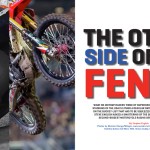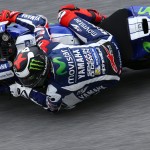On the Sunday night after the race at Valencia, we journalists all turn to each other and say: “Chin up, the new season starts on Tuesday.” We console ourselves at the thought that although one season has just ended, the next one starts in just a few hours’ time when the riders take to the track once again to start testing. It is only a half truth, though. The riders are on track, out on the new bikes they will race the following year, yet they are only half focussed on what they are doing. The season takes its toll, both physically and mentally, and the lap-times set at Valencia are more often a measure of rider optimism than actual performance.
So it is at Sepang where the new season really starts. Riders return fresh from their winter break, to ride bikes that have been modified with the data collected at Valencia and analysed over the winter. Minds are sharpened and the grid is riding as hard as they can, trying to figure out a good basis for the coming season. The first test of the year at Sepang is when the new season gets deadly earnest.
That was even truer this year at Sepang. With two major technical changes for 2016 – Michelin taking over as official tyre supplier, and the introduction of the spec or unified software for the electronics – Valencia had been more of a shakedown than a proper test. At Sepang, everyone was on the 2016 unified software, and Michelin had brought new front tyres, aimed at solving the lack of feel which had seen so many people crashing at Valencia and then later at Jerez. Four of the five manufacturers revealed their first serious prototypes for the coming season at Sepang, only Aprilia forced to use their 2015 bikes, while they wait to finish off their radically redesigned prototype.
There was a lot of work to do, much more than normal. That makes it hard to draw the usual conclusions you would in any other year. Teams with an advantage right now may not hold that advantage for long. Some riders took to the Michelins like a duck to water, others required some time getting used to them. Some teams adapted to the spec electronics immediately, others struggled. By the end of the campaign everyone will be more or less on the same page. Until then, there will be winners and losers.
Michelin managed to be both the winner and the loser at Sepang. The work the French tyre manufacturer had done over the winter had been a massive step forward. At Valencia and Jerez, riders had consistently lost the front, the vast majority of the field crashing at some point or another. The new front tyre at Sepang was a major improvement, the crash tally returning to ‘normal’ proportions. The feeling from the front tyre still left something to be desired, but at least they could feel the limit, the riders said. There are still a few bugs to be ironed out, as Pol Espargaro and Dani Pedrosa found out. The problem, according to Casey Stoner, was a profile mismatch. “There’s a little point after probably 45°, that it goes down just a little bit more, that it doesn’t seem to match with the rear with some of the profiles that we’ve tested,” the Australian said. “That gives everybody a bit of a nervous feeling, and essentially why people are struggling into Turn 5.”
Click HERE to read the rest of David’s thoughts in the latest OTOR








